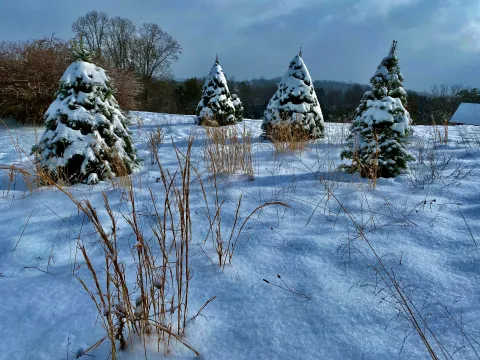Snow, white

The color of snow is taken for granted, but the whiteness has a reason for being.
By Steve Roark
Volunteer, Cumberland Gap National Historical Park
I’m not sure many of you want to revisit the topic of snow after the past couple of weeks, but every now and then I get nailed with a good question: Why is snow white? And where does the white go when it melts? The answer requires an understanding of light.
Photons, or light particles, come in a rainbow of colors. The photons on the violet-to-blue end of the color spectrum cruise the universe in short wavelengths, while the redder ones travel in longer waves. When photons encounter an object, several things can happen. They may bounce back (reflection), bounce sideways (scatter), or pass right through (transmission).
Or they may be stopped by the object, giving up their energy and dying (absorption).
An apple looks red because most of the colors in the light spectrum are absorbed, leaving only red photons to bounce back for our eyes to register.
Snow is white because a beam of sunlight entering a blanket of snow is scattered by a million ice crystals and air pockets and much of it reflects right back out. No one wavelength is absorbed or reflected, so snow is essentially the color of the sunlight reflecting off it, white.
And where does the white go when snow melts? Water reflects very little light, with most of it passing on through, and so the water appears clear. So, the whiteness is lost due to a difference in albedo, a fancy word that refers to the percentage of light an object reflects. The albedo of water is low, while the albedo of snow is high.
There is another snow color I see about every time snow stays around long enough for conditions to get right for it to happen, and that is blue.
Under low light conditions, such a really cloudy day or in dark shadows, snow will reflect more of the blue wavelength than the other colors, so the snow looks bluish.
Whenever I’ve seen this, everything has a blue-gray tint to it—snow, trees, the sky, everything. The clouds that provide the right light level to do this must be snow clouds, because it always seems to snow after I see the blue snow phenomena.
- Log in to post comments